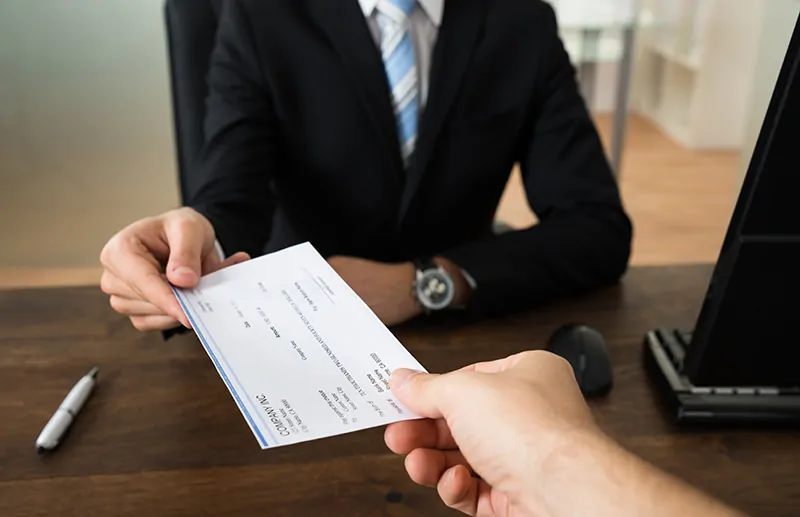
What Are Statutory Accounts? A Short Guide
31 Jan 2020Filing statutory accounts is a legal requirement. As a small or medium business, you have a choice of how you file your accounts. You can either submit a full set of accounts, known as statutory accounts or annual accounts, or an abridged set, which contains less detail but meets the compliance requirements of Companies House and HMRC.
This article covers the information you need to include in statutory accounts and the key numbers to look out for.
Statutory accounts are an important part of running your business so that your shareholders see how your company is performing and they keep your records updated with Companies House.
Statutory accounts must include a balance sheet, a profit and loss account, cashflow statement, notes to the accounts and a directors’ report, together with a cover, contents and company information pages.
There are a number of important figures you must include and, if you know what to look out for, you could even check up on how your competitors are doing.
What goes into a statutory account?
Company information page
This page should include your company name and registered number, the address of your registered office and the names of your directors and your accountant.
Directors’ report
The directors’ report outlines the main activities of your business, the performance and prospects of the company, together with details of any dividends that may be paid to shareholders.
The report lists the names of directors during the reporting year, together with brief details of their responsibilities.
You can use this section as an opportunity to look back over the past year and explain business conditions and your financial performance, together with any events that may hit the balance sheet. This can be followed by a look at prospects for the next 12 months.
The report should be signed by a director, with a statement that the report has been approved by the board.
Smaller companies with a turnover of £10.2 million or less, £5.1 million or less on its balance sheet, and 50 employees or fewer do not have to provide a Directors’ report in the Statutory Accounts.
The balance sheet
A balance sheet shows the value of everything that your business owns and what it owes as well, as what is due to be paid up to the last day of the financial year covered by this set of accounts.
It includes figures for the reporting year and the previous year, with a numbered reference to any explanatory notes that appear in the Notes page. The main items to include are:
-
Fixed assets
-
Tangible assets
-
Current assets
-
Stocks
-
Debtors
-
Cash at bank and in hand
-
Total current assets
-
Creditors: amounts falling due within one year
-
Net current assets/(liabilities)
-
Total assets less current liabilities
-
Creditors: amounts falling due after more than one year
-
Provision for liabilities
-
Net assets
-
Capital and reserves
-
Called up share capital
-
Shareholders’ funds
The balance sheet should be signed by a director, with a statement that it has been approved by the board.
When you or your shareholders review the figures in your accounts, the main numbers to watch are those that show how much cash is available in the business.
Look out for trade debtors, the amount owed to the company by your customers, as well as trade creditors, which is the amount you owe to your suppliers.
If your customers owe you large amounts, this weakens your cash position so you should aim to impose tighter payment terms. Similarly, you should aim to get the most favourable terms from your suppliers.
Look at short- or long-term debt and the value or status of any loans. On the balance sheet, debt is split between current creditors, money owed within 12 months, and longer-term borrowings, such as commercial loans or any repayable government grants or loans taken out during the pandemic.
Loan or grant repayments fall into categories on the balance sheet. For a five year loan, for example, payments due in the next 12 months are categorised as current creditors; the balance will be shown under longer-term debt.
If you have a number of loans to repay, you may not have much spare cash, depending on the time available to pay back.
Related: Company Valuation Services: How To Value A Business
Related: What is EIS?- alternative funding options for small businesses
Related: What is SEIS? - Alternative small business funding
Profit and loss account
The profit and loss account ultimately shows your profits by taking the sum of sales minus your costs. The summary account sets out:
-
Turnover
-
Cost of sales
-
Gross profit
-
Operating profit
-
Profit on ordinary activities before taxation
-
Tax on ordinary activities
-
Profit for the financial year
One of the most important figures in this section is the pre-tax profit, sometimes called EBITDA or earnings before interest, tax depreciation and amortisation. You can include an explanation of depreciation, tax, interest, the value of fixed assets and amortisation, and intangible assets in the notes to the accounts.
You can also provide more granular detail on different categories of turnover or costs in your internal management accounts, but you do not have to include those figures in your statutory accounts.
Related: Profit And Loss Forecast Template
Cashflow statement
The cashflow statement forms part of statutory accounts for larger companies, but smaller companies are exempt.
However, it can be a useful tool for any business, regardless of size because the amount a company makes in cash profit isn’t always the best sign of its health, as there are often other costs to pay.
The cashflow statement shows money coming into a company and going out. It will typically include money from operating activities, returns on investment, tax charges, capital spending and dividends paid.
It is a good way of seeing how frugal a company is as it shows how money is spent. However, you need to take account of information in the balance sheet as well to get an idea of funds due in the future.
Related: How To Do A Cash Flow Forecast
Related: SMEs' Most Common Issue Is Cash Flow. Here's How To Solve It
Notes to the accounts
Notes to the accounts allow you to provide more context and detail to the balance sheet or profit and loss account.
The notes must include a statement of the accounting principles you use and covers the basis of preparation and the way you represent turnover and depreciation.
By adding numbers to specific figures in the balance sheet or profit and loss account, you can show, for example, whether money is owed to a bank, a company or the taxman.
Under taxable fixed assets, you might provide more detail, such as the cost of a new asset and show depreciation and net book value.
For creditors, you could split the category into trade creditors, deferred income, taxes and other creditors.
Filing your accounts
Your first accounts need to be filed 21 months after registration with Companies House.
After that you need to file nine months after your company’s financial year ends. If you file late you could be fined up to £1,500 depending on how long the delay is.
You don’t have to file a full set of accounts to Companies House if you are a small business. Instead you can file an abridged version, but a full version still needs to go to shareholders and to HMRC with your company tax return. You can find out more about abridged accounts here.
Need an accountant?
Statutory accounts can be complicated and time-consuming, and you can face fines if you make a mistake. Our team of small business accountants are highly-experienced in helping firms with the preparation and filing of their accounts.
Get in touch with us today for further accounting, tax and bookkeeping advice on 0207 043 4000 or info@accountsandlegal.co.uk. Or why not get an instant accountancy quote and see how we could help.























